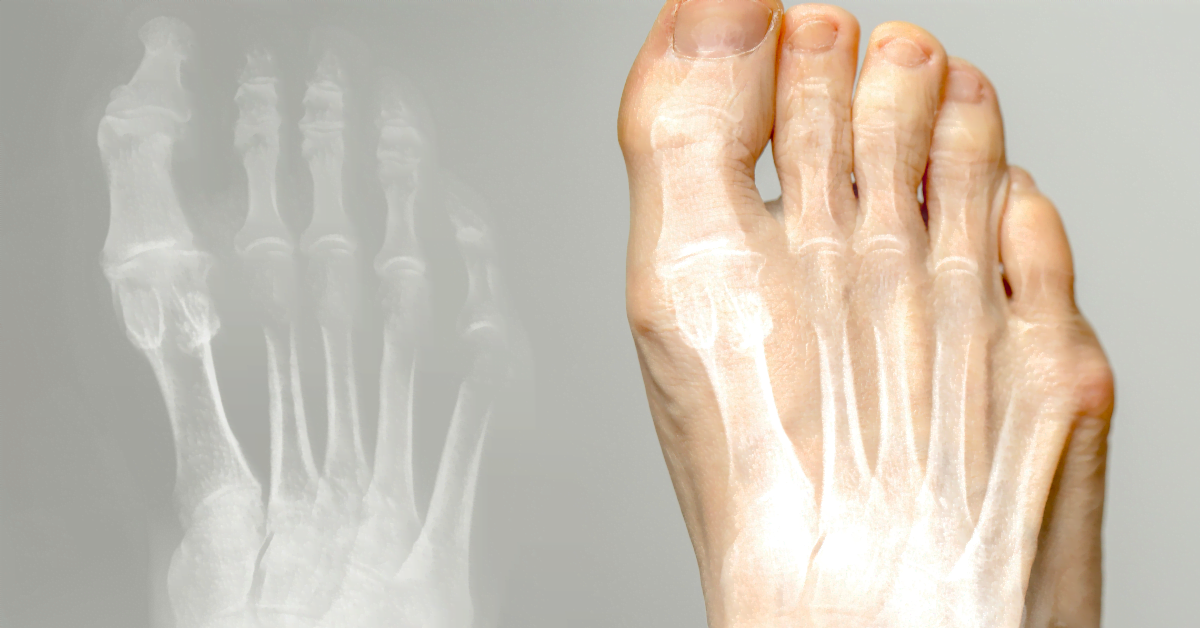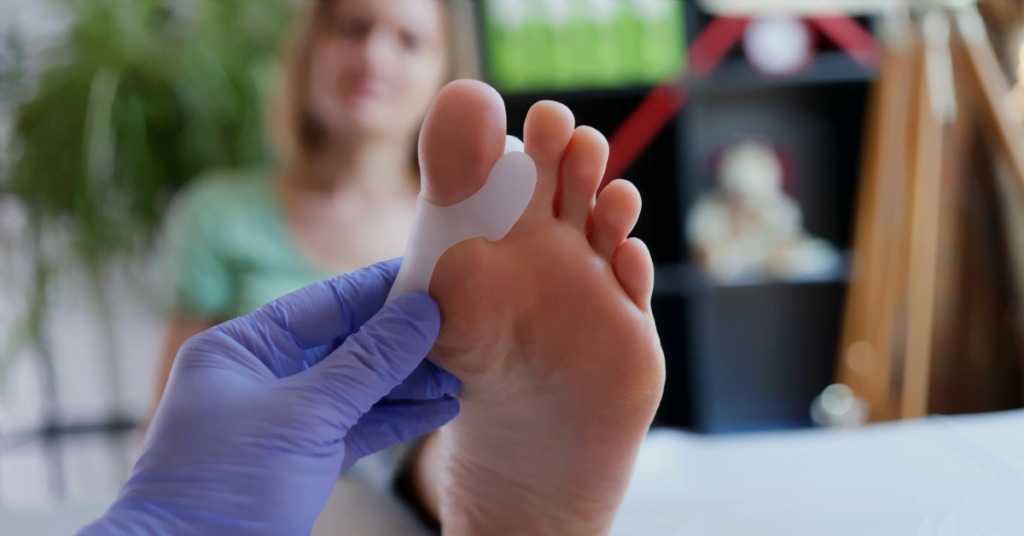What is hallux valgus
Hallux valgus is a condition in which the big toe bends toward the other toes and forms a lump or “foot lump” at the base of the big toe. It is a type of valgus foot, meaning there is an abnormal position of the foot.
Cause of hallux valgus
Hallux valgus can have several causes. One of the most common is wearing narrow shoes, which put pressure on the big toe and push it out of alignment. Another cause may be heredity, where you have a genetic predisposition to develop this condition.
Wearing high-heeled shoes can also lead to hallux valgus. This is because they push the foot forward, which puts pressure on the toes. In addition, certain medical conditions, such as arthritis and flat feet, may increase the risk.
Complaints due to bad shoes
Narrow shoes or high-heeled shoes can lead to a range of foot complaints, including hallux valgus. Such shoes can cause pressure and friction on the foot tubercle, which can lead to bursitis. This inflammation, in turn, can cause pain and swelling.
Therefore, it is essential to wear well-fitting shoes, especially if you already have incipient hallux valgus. Shoes with enough room for the toes, known as bunion shoes, can help relieve pressure on the big toe and slow the progression of hallux valgus.
Symptoms of hallux valgus
Hallux valgus can have different symptoms depending on how advanced the condition is. Some of the most common symptoms include:
- A lump at the base of the big toe.
- Pain in the foot tubercle, especially when wearing shoes.
- Redness and swelling around the foot lump.
- A burning sensation or discomfort in the foot.
- Difficulty walking.

In some cases, hallux valgus can lead to other problems, such as osteoarthritis, a type of osteoarthritis that affects the joints in the foot.
Treatment of hallux valgus
There are several treatments available for hallux valgus, depending on the severity of your symptoms and the degree of toe deformity. The goal of treatment is to reduce pain, improve the condition of the foot, and prevent further deformity.
One of the first steps in treatment is usually to change footwear. Wearing wide, comfortable shoes can help relieve pressure on the foot tubercle and slow the progression of the condition. In some cases, a podiatrist can advise on proper footwear and devices such as toe spreaders or orthotics.
- Changes in footwear: Wearing wider shoes or special bunion shoes can help reduce pressure on the lump.
- Physical therapy and foot training: This can help strengthen the muscles and ligaments and return the toe to a more natural position.
- Splints and straighteners: These are devices you can wear around your foot and toe to keep them in a more natural position.
- Orthotics: Assistive devices such as orthotics, heel spur orthotics can help improve foot alignment
- Medication: Painkillers and anti-inflammatories can help reduce pain and inflammation.
- Surgery: In severe cases, surgery may be necessary to straighten the toe.
Splints and straighteners
Splints and straighteners, also known as correctors, are devices designed to hold the big toe in a more natural position. They can be helpful in controlling the rate at which the hallux valgus grows and slowing the progression of the condition.
Hallux valgus toe spreaders, which are placed between the toes, can also help correct the position of the big toe and relieve pressure and pain.
In addition, foot training or physical therapy can help strengthen the foot muscles and improve foot flexibility, which can aid in treatment.
Surgery for hallux valgus
In severe cases, or if other treatments are ineffective, surgery may be necessary to correct the crooked toe. The specific procedure will depend on the degree of deformity and other individual factors. However, surgery can be effective in reducing pain and improving foot function.

Hallux valgus prevention
While it is not always possible to prevent the ailment, there are steps you can take to reduce the risk. These include:
- Wearing well-fitting shoes with enough room for your toes.
- Avoiding shoes with high heels or narrow toe boxes.
- Regular foot exercises to keep the foot muscles strong and flexible.
- If you already have incipient hallux valgus, consider using a toe spreader or corrector.
